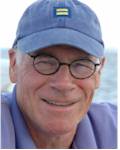Bible | Movies | Books | People | Hot Topics | Holidays | Humor | Gallery | Sanctuary | Sermons | Prayer | Quizzes | Communities | God | FAQ | Links
|
Sponsored Link |
by Ron Kronish, Director of the Interreligious Coordinating Council in Israel (Jerusalem, December, 2006) Hanukah is one of the Jewish holidays that resonates with many of the founding “myths” of Zionism—the few against the many, the weak against the strong, a small nation against a mighty empire. But it is not just the nationalist, militaristic festival portrayed in so many holiday songs and school pageants. It is also about miracles, about light, about hope and about rededication to the ideals and values that are central to our existence as a people in covenant with God. We light the Hanukah candles for eight nights to commemorate the rededication to Temple life, the essence of the religious/national life of the Jewish people in ancient times. And at the same time, we rededicate ourselves to preserving our religious and national life in the rebuilt state of Israel. Indeed, as Rabbi Daniel Gordis of the Mandel Institute has written, “Hanukah became a holiday about survival, about the spirit overpowering the sword, about good overcoming evil, and about the few — if their cause is just — ultimately vanquishing the many… and the possibility of survival for those who would seem to have no hope.”* In Israel, as we light the Hanukah candles each night, we keep a flicker of hope alive in a sometimes desperate ongoing situation of conflict. We rekindle our spirits and renew spiritual energy, even though the political climate looks bleak. Hanukah reminds us that we need to continue to believe in miracles and do our part to cooperate with God in making miracles happen. This is the essence of Zionism. The creation of the State of Israel in our lifetime, after the Holocaust, was indeed a modern miracle. But it would not have happened without the Jewish men and women who believed in this possibility and made it happen with their own hands and hearts and minds. According to American theologian Rabbi Harold Schulweis, “What happened on the fifth day of Iyar in our time — the day of Israel’s independence — reaffirms the miracle, the nes, that took place over two thousand years ago. The Hanukah lights remind us that miracles are as real as the transforming power of ideals.”* We are still in need of miracles in our time, bazman hazeh. In the second prayer that we say each night when we light the Hanukkah candles, the usual rendering is “Blessed are you Adonai, our God, Ruler of the World, who made miracles possible for our ancestors in those days in this same season.” However, in the earliest prayerbooks from Babylonia, such as the one by Sa'adia Gaon of the 9th century, and the Mahzor Vitry of 11th-century France, there is an added prayer: “Just as You made miraculous victories possible for our ancestors in those days in this season, so may You do the same for us in our days.” And in the Al Hanissim prayer, which is traditionally recited as part of the blessing after the meal and in the Amidah prayers during the eight days of Hanukah, we specifically ask God to perform new miracles not only “in those days” (i.e., in the past) but also in our own era. What kind of miracles do we have in mind? The miracle of the revival of Jewish national life in our own lifetime, after two thousand years of exile, is not enough. We are still in need of the miracle of peace. A few years ago, I attended a conference of religious leaders for peace, in Italy. Over lunch, an American journalist was interviewing Prof. Sari Nusseibah, president of Al Quds University in Jerusalem. Nusseibah was very critical of the religious leaders who had spoken, indicating that he thought that they often just make empty statements, without deeds to back them up. Asked what he thinks is needed to end the impasse in the Middle East, he responded sardonically by saying “We need a miracle!” My interpretation of Nusseibah’s remark is that we need something unexpected, a radical surprise, not the sort of “solution” that we read about in the newspapers every day. Sadat coming to Jerusalem in 1977 was such a miracle. At this time, we are in need of a true miracle -- the transformation of the ideal of peace into reality. This would be the profound fulfillment of the prophecy of Zechariah, which we read on Shabbat Hanukah: “Not by might and not by armies but by My Spirit, says the Lord of Hosts.” * (“The Miracle of Jewish Survival” in A Different Light. The Hanukkah Book of Celebration. Edited by Noam Zion and Barbara Spectre, The Shalom Hartman Institute, Jerusalem, 2000). Dr. Ron Kronish — a rabbi and educator — serves as Director of the Interreligious Coordinating Council in Israel (ICCI) and Co-Director of KEDEM (Voices for Religious Reconciliation).
Please take a moment to let us know you
were here!
If you want to talk with someone in person, please feel free to call 917-439-2305
The Rev. Charles P. Henderson is a Presbyterian minister and is the author of God and Science (John Knox Press, 1986). Charles also tracks the boundry between the virtual and the real at his blog: Next World Design, focusing on the mediation of art, science and spirituality in the metaverse. For more information about Charles Henderson. |
Sponsored Link
|
|||||

